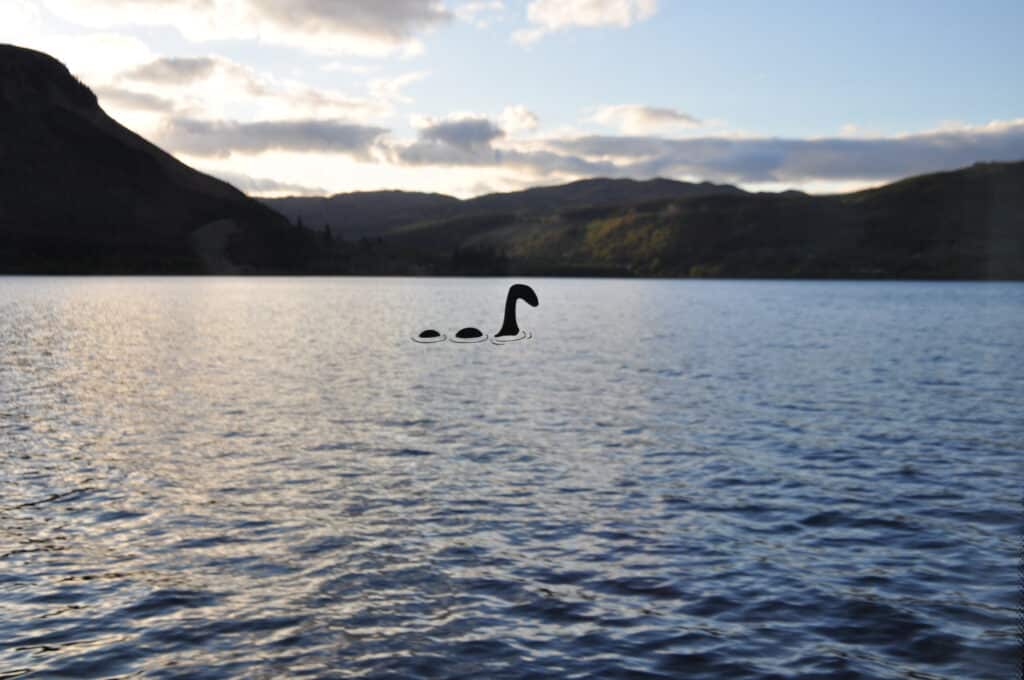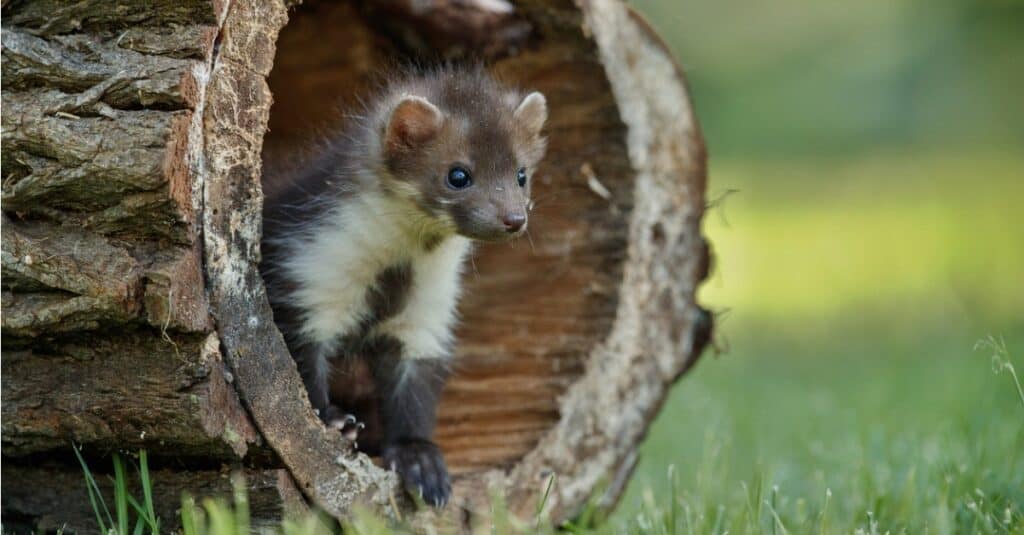Scotland has many beautiful lakes, each with its own character and appeal. But the one that stands out in the minds and imaginations of most is the iconic Loch Ness. This large, deep freshwater lake lies in the Scottish Highlands. It is most famous for the legend of the Loch Ness Monster, affectionately known as Nessie. Loch Ness holds more water than all of the lakes in England and Wales combined. It is only the second-largest Scottish lake by surface area but the largest by volume of water. So, how wide is Loch Ness at its widest point? Though the width varies along its length, Loch Ness reaches a maximum width of 1.7 miles (2.7 km). Continue reading to discover more about this fabled Scottish loch.

Loch Ness holds more water than all of the lakes in England and Wales combined.
©Luke Richardson/iStock via Getty Images
Loch Ness at a Glance
| Question: | Answer |
|---|---|
| What is the name of the lake? | Loch Ness |
| Where is Loch Ness located? | Loch Ness is located in the Scottish Highlands, 23 miles (37 km) southwest of Inverness |
| What is the width of Loch Ness? | 1.7 miles (2.7km) |
| What is the length of Loch Ness? | 23 miles (37km) |
| What is the maximum depth of Loch Ness? | 754 feet (230 m) |
| What is the average depth of Loch Ness? | 433 feet (32 m) |
| What is the capacity of Loch Ness? | 263 billion cubic feet (74 billion m³) |
| What is the surface area of Loch Ness? | 22 square miles (56 km²) |
| How many mythic sea monsters is Loch Ness purported to have? | Loch Ness is purported to have at least 1 mythic creature lurking in its depths. |
How Wide Is Loch Ness at Its Widest Point?
Loch is the Scottish word for a lake or a sea inlet. Loch Ness is a stunning lake, surrounded by the breathtaking and rugged landscapes of the Scottish Highlands. Rolling hills and the majestic Monadhliath Mountains provide a dramatic backdrop, offering spectacular views. Towns and villages, like Drumnadrochit and Fort Augustus, are located around the loch, providing services and accommodations for visitors. Urquhart Castle on the western shore, adds a touch of antiquity to the landscape.
Urquhart Castle
The castle, near the village of Drumnadrochit, is one of the most iconic in Scotland. The ruins that survive today showcase a mix of architectural styles, including medieval and Renaissance. The castle fell into disuse and was largely abandoned by the 17th century. Despite its ruined state, Urquhart Castle is a popular tourist attraction, drawing visitors from around the world. The castle’s location on the shores of Loch Ness creates an association with Nessie, the legendary Loch Ness Monster, and the sightings of the mythical creature.

Urquhart Castle on the shores of Loch Ness creates an association with Nessie, the legendary monster.
©Jule_Berlin/iStock via Getty Images
The Legend of Nessie, The Loch Ness Monster
The legend of the Loch Ness Monster, affectionately known as Nessie, dates back to the early 20th century. At that time there were reported sightings and various photographs claiming to capture the elusive creature. Despite extensive efforts, there’s no scientific evidence supporting the existence of such a monster. In recent years, photographs that appear to depict the sea monster turned out to be otters. But it sure adds a sense of mystery and excitement to the area!

The Loch Ness Monster is a long-necked creature in Scottish folklore that inhabits Loch Ness.
©iStock.com/Yulia Bogomolova
Wildlife at the Loch
Though Nessie is the most famous resident, the area surrounding Loch Ness is home to a variety of wildlife. The lake is home to waterfowl, including ducks, swans, and herons. Raptors, such as osprey and eagles, are lakeside residents, as well. Along with various fish species, including salmon, trout, and perch, Loch Ness has otters! These playful mammals can occasionally be spotted along the shores or in the water. The hills and woodlands surrounding Loch Ness are habitats for red deer, often seen grazing in the area. The wooded areas near the loch also provide a suitable habitat for pine martens. These small, nocturnal mammals are skilled climbers and may be observed in the trees. However, be aware that these little critters are a protected species, so look, but don’t touch.

The wooded areas near the loch also provide a suitable habitat for pine martens.
©iStock.com/Photocech
Area Flora
The hills and slopes surrounding Loch Ness are principally woodlands. Common tree species include Scots pine, downy birch, sessile oak, and rowan. Heathlands and moorlands, dominated by heather, bracken, and other hardy plants, are also in evidence around the lake. The cool, damp climate of the Highlands is conducive to the growth of mosses and lichens. These can be found on rocks and trees,
in shaded and damp areas. Ferns such as bracken thrive in the understory.

Ferns such as bracken thrive in the understory around Loch Ness.
©iStock.com/troyka
Five Fun Facts about Loch Ness
- Loch Ness never freezes! The water maintains a consistent temperature of 41° F (5° C) year-round.
- The Great Glen Fault, a major fault line running through the UK, runs beneath Loch Ness. Though it is mostly inactive, the lake will occasionally burp and tremble. The tremors and the accompanying bubbles lend credence to the idea of a sea monster inhabiting the lake.
- The water in Loch Ness is quite murky thanks to the peat that washes down from the surrounding hills. The peat, along with less than abundant sunshine and the lake’s incredible depth, leave the waters of Loch Ness nearly black and devoid of visibility. Such an environment might host any number of aquatic horrors!
- The first sighting of Nessie, the Loch Ness Monster, occurred in 565 A.D. The story goes that Saint Columba was walking along the shore when he witnessed a large water beast preparing to attack a swimmer. He invoked the name of God as he entreated the serpent to depart. The beast immediately returned to the depths of the Loch Ness, leaving the swimmer unharmed.
- The Surgeon’s Photograph, a hoax perpetrated by a London surgeon, brought international notoriety to the Legend of The Loch Ness Monster. However, it was revealed as a hoax for many years.

The Surgeon’s Photograph brought international notoriety to the Legend of The Loch Ness Monster.
©Marmaduke Arundel “Duke Wetherell / PDM 1.0 DEED – License
The photo featured at the top of this post is © Luke Richardson/iStock via Getty Images
Thank you for reading! Have some feedback for us? Contact the AZ Animals editorial team.






